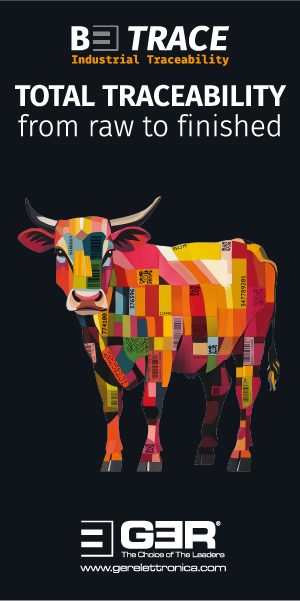Market Intelligence — 28.06.22
Macroeconomics
In addition to the great human suffering that the war in Ukraine has inflicted on people, as all wars do, the war in Ukraine has other considerable significance. There is the problem of energy supply in Europe, which can, be solved in principle.
Then there is the problem of food supply, which was already difficult enough without the war and the supply interruptions. Even though there is a lot of talk about this today, the full impact of the possible consequences will actually only occur next year. In addition to the transport of stocks still stored in Ukraine, the question of how much harvest can be expected for 2023 owing to the war and how the gaps can be filled is already pressing.
In addition to the humanitarian question of people going hungry, there is also a major problem of growing social tensions and whether these can be controlled. In contrast, the influence of inflation on the lives of people in richer countries seems more like a marginal note. But this should not be neglected either. The simplest economic equations (less income = less consumption = less growth = more unemployment; but also higher prices = higher wages = more unemployment) also harbour trouble.
Even if most people in the Western world have come to terms with covid-19 and daily life has almost returned to normality, the issue as such should still not be ignored. First of all, sub-variant B.A. 5 is spreading rapidly and even if the hospitalisation rate does not increase linearly, it is still expected to have a significant impact on absenteeism in companies, especially after the summer holidays, if the current trend continues.
The covid situation in China is also by no means fully under control. Even if the very low infection figures in Shanghai confirm the government’s policy, recurrent outbreaks show that China cannot expect to become a corona-free zone. In particular, if the sub-variant, which is significantly more contagious, also becomes established in China, a policy that continues to focus only on infections would continue to have a significant negative impact on the economy.
Problems in supply chains are not abating. While in the past two years the focus was almost exclusively on the missing or late delivery of components, today many difficulties, especially in transport logistics, must also be linked to overstocking.
Many ports complain about delayed acceptance of containers, which is overtaxing storage capacities and thus also burdening shipping traffic. Further problems are therefore to be expected, as the effects of the lockdown in Shanghai and the associated problems with seasonal materials will only become apparent in the next few months. In addition to the immediate effects of either shortages or overstocking of some products, corporate decisions to relocate production sites are now beginning to prove to be an additional potential burden. In Asia in particular, there is a lot of pressure to reduce dependence on China and to find and establish new locations in the region. This not only leads to considerable difficulties in the transition period, but also requires adjustments for the logistics chain, which are not conceivable without further burdens. Whichever way one looks at it, normalisation can hardly be expected before the end of this year.
The financial markets reflect the great uncertainty. The stock markets continue to move backwards in the general trend owing to the generally expected recession. There are always days with strong and significant recoveries and, above all, there are considerable sectoral differences. The sectors that have a high pricing power, which could generally be described as ‘basics’, are doing relatively well.
The situation is similar in the energy market. Europe’s dependence on Russian natural gas is a regional problem and has led to significant price increases. The reduction in supplies from Russia is a major contributor to this. The oil price is declining slowly and with fluctuations. It is hardly surprising, because there is no supply problem with oil and Russia is always able to sell its oil at a discount to other markets, despite the boycott by many states. Of course, this gives a decisive competitive advantage, as Russia can rely on significantly lower energy costs to supply its population and economy than, above all, producers in Western countries. At the moment, the oil price is still oscillating around a level of $110 per barrel.
The price of gold remains relatively flat, moving little within the range we have been observing for some time.
Fears of a global recession and, above all, the decline in construction activity in many countries, especially in China, have caused prices for industrial metals to fall significantly. At this point, we should also take a look at the market for cotton, whose price almost collapsed after a few weeks following the highs it had reached. At the end of last week, the price was in free fall and losses amounted to almost 40%.
Leather Pipeline
The holiday season is approaching and big decisions and trends will only be taken in September or October. That is why there is little news about leather demand at the moment.
In the furniture industry in Europe, the current season is coming to an end and production is coming to an end. In the car industry, model changes and production interruptions in the summer are also imminent, in the shoe industry the current material and design planning is under way. Only in the luxury goods industry can little change be seen because there is usually no pre-production, no significant seasonal influences and production is usually against orders and not against large stocks.
That is why it is easiest to start with the luxury goods industry when looking at the current situation. All manufacturers and all suppliers report full order books, regardless of the many negative influences on the economy, there is hardly any noticeable change in the buying behaviour of the customers of these companies. The only concern may be material supply or possible restrictions owing to labour shortages.
Of course, there are complaints about rising costs here too, but given the margins with which calculations are made in this sector, rising costs are a nuisance but not really a threat to the business. High-income groups around the world are still willing and able to spend on luxury goods.
In the automotive sector, the situation continues to be determined only by the production capabilities of the factories. If components are missing, if factories in China are closed because of lockdowns, then the planned number of vehicles cannot be built. For those who are part of the automotive leather supply chain, however, the question is not only the total number of vehicles that will be built, but rather the extent to which the production of high-end vehicles, those most likely to be equipped with leather, will be affected. The often discussed question, which is still not answered conclusively, is how strong the decline has been in the production of high-value vehicles in the past few years and what the possibilities are for improvement in the near future. Whatever the outcome, the car industry is not pointing to a major recovery in production over the next few months.
The footwear and furniture sectors will, in our estimation, be hit hardest by inflationary developments in the coming years. In addition, there is the issue of problems in the supply chains of mass consumer goods. This is a topic we will return to later. In any case, at the moment it is completely unclear to what extent declining disposable incomes will affect the consumption of shoes and furniture. Will the products be affected at all, and if so, in which price and quality segments?
We would argue that the furniture industry in particular will probably face the coldest and harshest headwinds. Of course, this does not only apply to leather furniture, but probably to the furniture industry as a whole. There are various parameters here that, in our view, point to a negative outlook. On the one hand, with falling real incomes and rising prices for energy and food, furniture is certainly not the most essential consumer goods product on people’s shopping lists. On top of that, the covid pandemic, which put less focus on travel and more on staying at home, is easing now. Recent seasons have been very successful for this sector, but people want to move around again now. The property market is also suffering because of rising interest rates and this too plays a weighty role in demand for new furniture. Here one has to pay special attention to China, where real estate sales have dropped by almost one-third in the last two months.
In the case of shoes and leathergoods, the effect of falling disposable incomes on purchasing behaviour will become particularly apparent. Will people buy less, will price become the decisive criterion, or do we have a real chance that people will pay more attention to quality and longevity and, if necessary, be prepared to make a careful trade-off between price and quality? However, we still have another very big hurdle to overcome. Can the consumer still make a fair assessment of quality and materials at all, or has that been lost in the course of uncontrolled mass consumption?
In this context, we also have to come back to supply chain problems. After the hope in 2021 that the covid pandemic would be over in 2022 and the world would return to shopping normality, many retailers increased their stocks. Owing to the logistics problems, many bulk goods have not arrived on time. We hear from many importers, internet platforms and retailers that, apart from some missing items, their main problem lies much more in selling the piled up stocks. The problem seems to be causing a lot of headaches, especially in the middle and lower price segments.
In this time of rising prices, it is extremely difficult for the consumer goods industry to find a balance now between scarcity and abundance, both physically and in pricing. Those who are currently burdened by stocks will possibly try to solve this by an aggressive pricing policy, which on the other hand will then be in stark contradiction to the necessity of price increases owing to the increased costs for current production. In particular, the pricing and sales policies of the major platforms and the major retailers should be watched very closely in the coming months.
In a brief look at the commodity markets, we note that the price gap we have pointed out in the past is slowly starting to close. The large suppliers from the US have been able to free themselves somewhat from the sales pressure they were facing and have been able to stop the downward trend in prices in recent weeks. In Europe, where a large part of production was certainly too expensive in the international price grid, the downward trend continued and thus the price gap has slowly begun to fade.
What will be decisive will be if the leather industry remains active in the raw material markets in terms of planning and sales in the coming weeks and months. With the exception of high-quality raw material, it is hard to believe that all raw material sourcing is currently in tune with the sales situation. One has the impression that many tanners, especially in China, are buying because the raw material appears to be cheap. This is certainly true and, in the light of history, it is still not wrong to stock up on raw materials in order to profit from them later. Most recently, this also happened in 2020.
We will not make a final assessment of the situation here, because we are of the opinion that there are too few reliable facts for this at the moment. It would be too simplistic to use the economic cycles and experiences of the last 30 years alone as a basis for decision-making. Nevertheless, we should not lose sight of the fact that there are no signs of growth in the leather industry. We do not see any signs of growth in leather demand, the costs of production and transport are rising massively, disposable incomes beyond energy and food are currently falling sharply worldwide, interest rates are rising, and there is political instability in many regions of the world. None of this is positive for consumption.
Slowly increasing production in China is easing the market, the approaching end of the busiest production season is having a dampening effect on demand. The use of very cheap, whole hides is also having an effect in the area of collagen and gelatine. The sharp drop in prices for cattle hides has simply made more raw material available for this sector. We assume that in the next quarter we should expect not only a certain stability, but a further calming of the price situation.
In the sheepskin sector, the situation is perhaps a little more positive. Prices for raw material can hardly fall any further.
The extreme devaluation of the Turkish lira has made the companies with a high export share very competitive for the moment. We also sense a marginal improvement in demand from the Middle East. All in all, this gives the impression that leather in the clothing sector, but also in gloves, has been able to recover some of the lost market. Nevertheless, this sector is also affected by the same macroeconomic problems.
We are now taking big steps towards the holiday season in the northern hemisphere. What we have not yet mentioned is whether a water shortage, especially in Italy, poses risks to production. Nobody talks about it openly, but it would be remarkable if the acute lack of water were not also to affect the leather industry at some point. We hope that it will rain there soon.
It is clear that the packer industry, after the strong price drops for hides over the last few months, is now absolutely focused on counteracting this trend and doing everything to turn it around. It never always goes in one direction, but basically the question is whether a temporary easing is really a sign of fundamental improvement. We question this for the masses, but we do not believe that the current moment puts us in a position to judge this conclusively. Caution is probably still advisable.
Leather demand, which was already insufficient to absorb raw material supply in recent months, has not improved fundamentally. Speculation, short-term strategic stock building and artificial supply shortages can all have an effect in the short term but not remain effective in the long term. Therefore, it probably makes sense to continue to pay very close attention to market developments, to remain flexible and to be ready for quick decisions.












